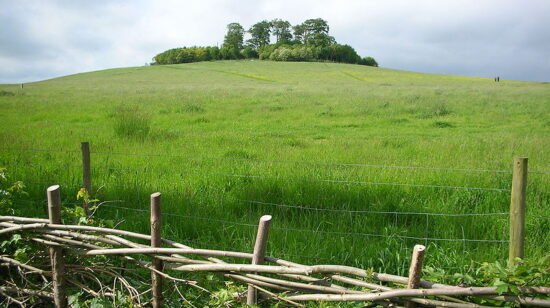
Two illustrated pages from the Lindisfarne Gospels, which you can see on display in the Treasure Gallery at the British Library.
Mmm… the smell of old books; something that can never be replaced by the Kindle.
But if you can’t judge a book by its cover, you certainly shouldn’t judge it by its smell, because no matter how old they are, these classics remain some of the most greatest literary treasures in the world. We just wonder what their authors would’ve thought about electronic versions…
1. The Book of Ingenious Devices

The Book of Ingenious Devices.
If Dragon’s Den had been around when three Iranian brothers wrote this book in AD 850, they’d soon have been millionaires. The Book of Ingenious Devices is an instruction manual for 100 mechanical devices, all of which are, you’ve guessed it… ingenious.
Some were inspired by the works of other greats such as Hero of Alexandria, Philo of Byzantium, as well as ancient Persian, Chinese and Indian engineering. But many others were the original inventions of the Banu Musa brothers. Automatic fountains, mechanised musical instruments and an automatic crank for use in hydraulic devices – all feature in this gem now kept at Topkapi Palace, Istanbul.
2. The Lindisfarne Gospels

Made about 100 years earlier, between 680 and 720, are the beautifully illustrated Lindisfarne Gospels. Made by monks in a small, but renowned monastery which lies of the coast of what was then the Anglo-Saxon kingdom of Northumbria, it’s the oldest surviving English translation of the Gospels. Although it might seem remote, the monks here were by no means cut off from the world; the beautifully illustrated pages of this remarkable book reflect many cultural influences, including native British, Celtic, Germanic, Roman, Early Christian, Byzantine, North African and Middle Eastern. Oh, and did we mention, we’re crowdfunding an archaeological excavation that you can join in with to find the very monastery where it was made?
3. The Flood Tablet

The Flood Tablet
The Flood Tablet, now displayed at the British Museum, dates to the 7th century BC – about 400 years before the first copies of the Bible. It describes a man called Utnapishtim who was forewarned by the Gods of a great flood. He builds a boat and fills it with his possessions, his family, skilled craftsmen of every kind and domestic and wild animals. Utnapishtim survives the flood for six days before landing on a mountain called Nimush. He releases a dove and a swallow who return without finding any dry land, and then a raven which does not return, showing the waters must have gone down. Sound familiar?
4. Mabinogion

Pages from the 14th century copy. Image via BBC.
Game of Thrones? Pah! If you’re into fantasy, it’s the Mabinogion you want to read. Set in a bizarre and magical landscape that corresponds with the west coast of Wales, this Medieval manuscript draws upon pre-Christian Celtic and even Iron Age mythology. Its tales deal with the themes of fall and redemption, loyalty, marriage, love, fidelity, the wronged wife and incest. Full of white horses that appear magically, giants, intelligent women and heroic men, it even contains some of the earliest mentions of King Arthur. So move over Georgie T, this is the real deal!
5. Lysistrata

Lysistrata
Now, we already know from some of their artwork that the Ancient Greeks were a cheeky bunch. But Lysistrata, the play written by Aristophanes, is the dread of shy classics students all over the world. Set against the backdrop of the Peloponnesian War, our heroic female lead persuades the women of Athens and Sparta to put an end to the war by withholding the one thing the men cannot survive without… (and it’s not beer or football!)
6. Aesop’s Fables

The Dog Who Came to Dinner. The moral of this fable is: Even dogs have to save face sometimes. From the Medici Aesop, illustrated by Mariano del Buono. Image via Treasures of the New York Public Library.
Aesop’s Fables are probably the most familiar out of all the books listed. What might surprise you is that they are attributed to a slave and story-teller living in Ancient Greece between 620 and 560 BC. These stories have then been passed down and reinterpreted by many different authors and in many different art forms. But there are also many fables attributed to Aesop for which he cannot claim credit. Nevertheless his enduring stories show the importance of storytelling between communities and generations.
This is an edited version of an earlier article.
Love archaeology?
DigVentures was born from a mission: to connect people who love archaeology with opportunities to DO archaeology. Together, we're making groundbreaking new discoveries that everyone can be part of, and creating archaeology content that we can all share, learn from and enjoy. Wherever you live and whatever your background, you can be part of it too.
Become a Subscriber






There are no comments on this post yet. Be the first!